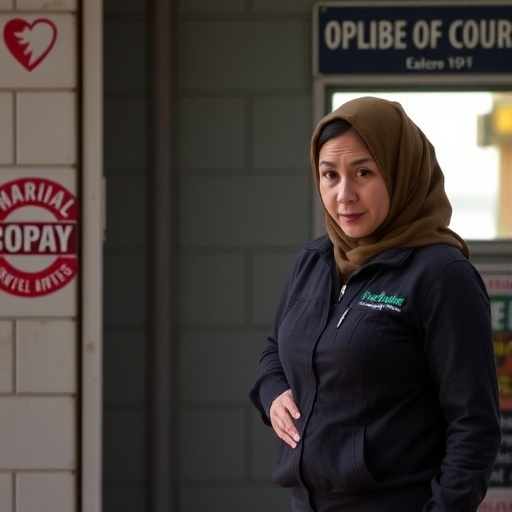In an eye-opening study that sheds new light on occupational health disparities, recent research highlights the undue burden of breast cancer-related occupational exposures borne by immigrant women. This investigation dives deeply into the environmental and workplace factors that disproportionately affect this vulnerable population, underscoring a critical public health challenge that has largely remained underexamined until now.
The study meticulously dissects how immigrant women, often employed in sectors fraught with hazardous chemical and physical exposures, face heightened risks that may contribute to the development of breast cancer. These findings resoundingly call attention to the intersection of gender, immigration status, and occupational environment, revealing complex dynamics that exacerbate health inequities in cancer incidence.
At the core of the research is an analysis of numerous carcinogenic and endocrine-disrupting agents prevalent in various industries dominated by immigrant workers. From manufacturing facilities to cleaning services and agricultural labor, these occupations routinely expose women to solvents, pesticides, polycyclic aromatic hydrocarbons (PAHs), and other toxicants implicated in breast carcinogenesis. This toxic cocktail, often encountered without adequate protective measures, forms a critical nexus for elevated disease risk.
Importantly, the research underscores the biological plausibility of such exposures increasing breast cancer risk. Chemical agents like benzene and certain phthalates are known to act as endocrine disruptors, altering hormonal signaling pathways central to breast tissue regulation. Prolonged exposure to these substances can lead to DNA damage, aberrant cell proliferation, and disrupted apoptosis—all hallmarks of tumorigenesis.
The investigation also raises concerns about the role of work shift patterns, stress, and socioeconomic strain, which further compound cancer risk among immigrant women. These psychosocial factors may influence hormone levels and immune function, potentially amplifying vulnerability to carcinogenic insults.
Crucially, this study articulates how systemic workplace inequalities, including insufficient regulation enforcement, language barriers, and limited access to occupational health services, disproportionately endanger immigrant workers. These structural deficits prevent adequate hazard recognition and mitigation, leaving many women exposed to preventable risks.
The authors leveraged comprehensive exposure assessment tools, epidemiological analysis, and biomonitoring data to establish robust links between occupational hazards and potential breast cancer risk in this population. Their multifaceted approach provides a model for future research endeavors aimed at unraveling the complex etiology of environmentally-linked cancers.
Moreover, the research highlights the urgent need for targeted interventions that address the occupational health needs of immigrant women. Policies emphasizing rigorous exposure reduction, culturally competent health education, and improved workplace safety standards must become priorities to mitigate these disproportionate risks.
The findings resonate beyond the workplace, as the health repercussions ripple through families and communities. Breast cancer’s toll extends past individuals to affect social structures and economic stability, especially in immigrant communities often characterized by limited healthcare access and social support.
This rigorous inquiry also challenges preconceived notions about breast cancer risk being predominantly driven by genetic or lifestyle factors alone. Instead, it firmly establishes environmental and occupational determinants as pivotal contributors, demanding a reevaluation of public health strategies in cancer prevention.
The nuanced insights garnered underscore the importance of intersectional analyses in epidemiology. Only by recognizing how gender, ethnicity, and economic status intertwine with occupational exposures can effective prevention frameworks be designed and implemented.
In conclusion, this transformative study serves as a clarion call to researchers, policymakers, and advocates alike. The occupational landscapes navigated by immigrant women are rife with hidden dangers that have far-reaching implications for breast cancer risk, demanding urgent and concerted action.
Addressing these occupational health disparities requires an integrated approach that combines scientific rigor, community engagement, and equitable policy development. By illuminating these pressing challenges, this research paves the way toward a future where occupational environments no longer serve as crucibles for cancer risk among society’s most marginalized workers.
Subject of Research:
Breast cancer-related occupational exposures in immigrant women
Article Title:
Breast cancer-related occupational exposures facing immigrant women
Article References:
Knox, K.E., Ohayon, J.L., Carrera, E. et al. Breast cancer-related occupational exposures facing immigrant women. J Expo Sci Environ Epidemiol (2025). https://doi.org/10.1038/s41370-025-00808-9
Image Credits: AI Generated
DOI:
https://doi.org/10.1038/s41370-025-00808-9
Tags: Breast cancer risks in immigrant womencarcinogenic agents in manufacturingelevated disease risk in vulnerable populationsendocrine-disrupting chemicals in industriesenvironmental factors in cancergender and immigration health disparitieshazardous chemicals and breast cancerimmigrant women and cancer incidenceoccupational health disparitiespublic health challenges for immigrant workerstoxic exposures in cleaning servicesworkplace exposures and health





